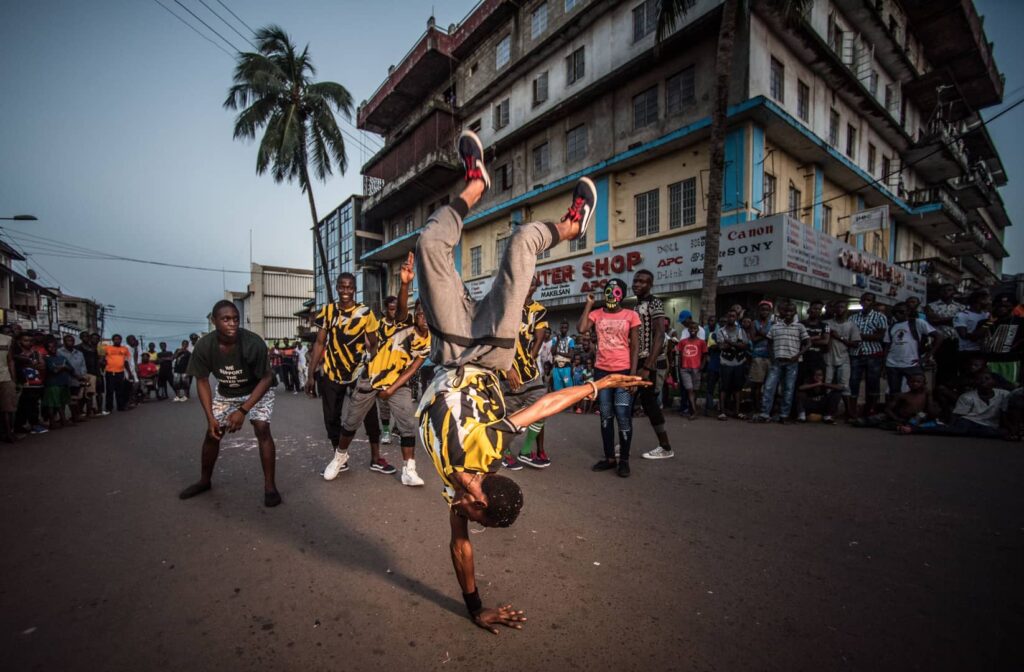In the heart of Bengaluru, as the clock approaches 6 pm at Fandom at Gilly’s Redefined, a palpable energy electrifies the air. The venue pulses with life as the crowd swells, the excitement building with each passing moment. In a captivating face-off, Divya Easwaran, an Afro dancer from Bengaluru, and Nivesh Kannan, a hip-hop dancer from Coimbatore, prepare to showcase their incredible talents.
The ambiance is charged with anticipation, and then it happens.
The infectious beats of Dhee and Arivu’s ‘Enjoy Enjaami’ fill the space, capturing the senses. Divya, embodying her Afro dance style, gracefully leaps forward, her hands mirroring a frog’s movement, all while the lyrics—“Thanniyil odum thavalaikki, kambali poochi thangachi” (for the frog that runs in the water, the caterpillar is sister)—resonate through the air. The crowd erupts in an ecstatic frenzy, feeding off her infectious joy. Meanwhile, Nivesh delivers his unique fusion of hip-hop and street dance, his movements sharp and defined. The dance-off unfolds, each dancer building upon the other’s energy in a thrilling exchange.
Thus begins the South Zone Final of Red Bull Dance Your Style India 2023.
Catching the Wave
Red Bull Dance Your Style, a national dance competition, showcases the talents of street dancers from across India’s four regions—North, South, East, and West. The competition culminates with the India Finals, where one winner will represent the country in the Red Bull Dance Your Style 2023 World Final in Germany.
The surge of street dancing in India can be attributed to the amalgamation of social media, dance reality shows, and an evolving dance scene. Dancers are now enjoying unprecedented visibility and opportunities to showcase their skills on both national and international platforms. The Indian street dance scene uniquely blends elements of local traditional dances, Bollywood influences, and international street dance styles. Dancers from cities like Mumbai, Delhi, Chennai, and Bengaluru showcase their prowess in breaking, popping, locking, and freestyle, adding their own flavor to the global street dance phenomenon.
ZuBoo, the founder of the Ghetto Academy of Dance in Bengaluru, reflects on the transformation of the street dance scene in India. Having witnessed its evolution over nearly two decades, he recalls how street dance made its way into college events, eventually leading to the introduction of open-style dance battles that now span the nation.

Media’s Role in the Evolution
Pradeep K, who reached the all-India finals last year, acknowledges the power of social media and various media platforms in propelling the growth of street dancing in India. However, he raises concerns about the potential dilution of authenticity as dancers prioritize capturing attention over the art form’s essence.
The Journey of Personal Growth
For ZuBoo, street dancing wasn’t just a passion—it became a path to personal growth. He reveals that his limited education, due to difficulties with English, inadvertently led him to street dance. The impact of dance videos sparked his interest and eventually led him down a path of artistic self-discovery.
Similarly, Divya Easwaran, a dance teacher, shares how street dancing transformed her. While she was initially introverted, street dancing encouraged her to explore and express herself freely, breaking away from the constraints of traditional dance forms she had previously practiced.
Beyond the personal growth, street dance has also elevated Divya’s communication skills. “After street-dancing, I have become more expressive. I learned to communicate better,” she says, emphasizing how the art form has improved her teaching abilities as well.
An Inclusive Community
Dancers in the street dance community emphasize its inclusivity and diversity. The community fosters an environment where dancers can embrace their individual styles and perspectives. The absence of gender bias is celebrated, and male dancers stand behind their female counterparts, empowering them.
Varsha Amarnath, a hip-hop dancer, highlights the unity that underpins the hip-hop culture—love, peace, and unity. The spirit of healthy competition coexists with mutual support, creating a space where dancers can connect, collaborate, and thrive.
Conclusion
Bengaluru’s dancers are a testament to the vibrant street dance culture that’s thriving in India. Through their stories, we witness not only the growth of an art form but also the profound impact it can have on personal growth and self-expression. As the street dance scene continues to evolve, it’s crucial to balance the allure of attention with the authenticity that makes this art form truly unique. From coast to coast, India’s street dancers are embracing their individuality while celebrating the unity that lies at the heart of their art.









